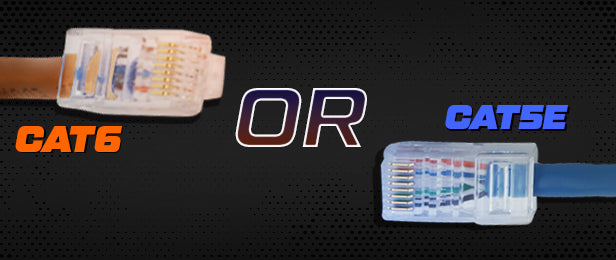What is the Difference Between CAT5E And CAT6 Cable
 Mar 09, 2023|
Mar 09, 2023| View:412
View:412First: what do CAT5E and CAT6 cables have in common?
CAT5E and CAT6 cables have a lot in common, and can be quite hard to tell apart visually. CAT6 cables are usually a little thicker, but you'll need a keen eye to notice. Both are built to a Category (Cat) performance standard set by the American National Standards Institute (ANSI) and the Telecommunication Industry Association (TIA). Both are comprised of four twisted pairs (which are wound tighter in CAT6) and both have the same RJ45 end-connectors. Note that these are different sizes to accommodate the cable type they're used for.
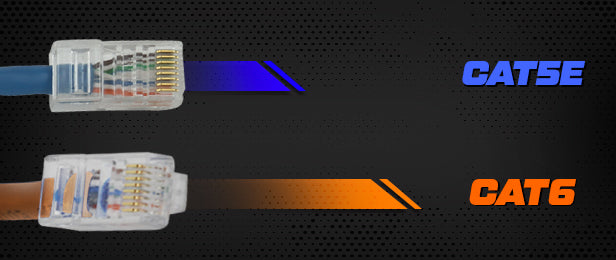
CAT5E vs. CAT6: speeds
CAT5E is the slower of the two. This type of cable can support 1000BASE-T (Gigabite Ethernet) with speeds of roughly one Gigabite per second (Gbps) at 100MHz. This is fine for everyday, but if you're a heavy duty user you'll find CAT6 far more suitable as it's way faster. This type of cable can support data transfer on 10GBASE-T (10-Gigabite Ethernet), giving you top transfer speeds of up to 10 Gbps per second at 250MHz—500MHz. All cables from Primus Cable either meet, or exceed, these minimum speed requirements.
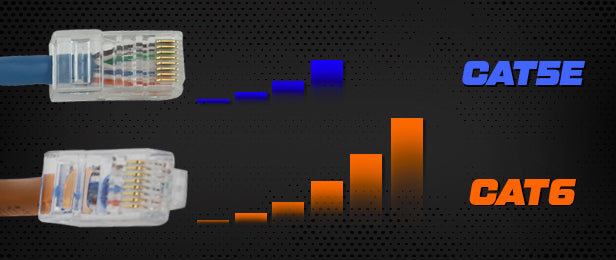
CAT5E vs CAT6: performance
CAT6 cables have superior crosstalk reduction characteristics and bandwidth speed (550MHz vs 350MHz) when compared with CAT5E. Some CAT6 cables—and even some premium CAT5E—do this by using a nylon spline to isolate the four pairs of twisted wire inside. This can make the cable feel more rigid, although more flexible CAT6 cables are available that use alternative methods to keep the transmission clean. Typically you'll experience less noise, higher transfer rates and fewer errors with a CAT6 cable.
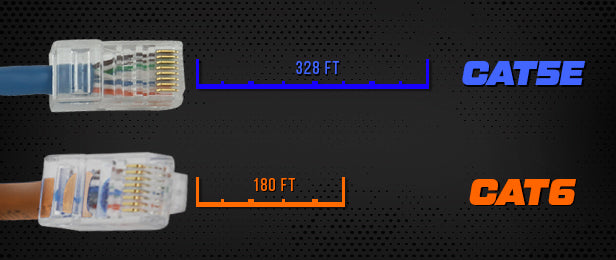
CAT5E vs CAT6: length
Both cables are available from Primus Cables in lengths of up to 1000 feet in bulk spools, but shouldn't be run for over 328 feet as this can cause a drop in signal quality. Bear in mind that CAT6 cables don't perform as well across long distances. For distances longer than 55 meters (180 feet), you'll only get a maximum network speed of up to 1,000 Mbps—the same as a CAT5E cable. In this case, upgrading to CAT6 may be unnecessary. If you want to make the most of the Gigabite Ethernet that you've paid for, you'll need to limit your distance to 180 feet (or 108 feet if your network has a lot of crosstalk).
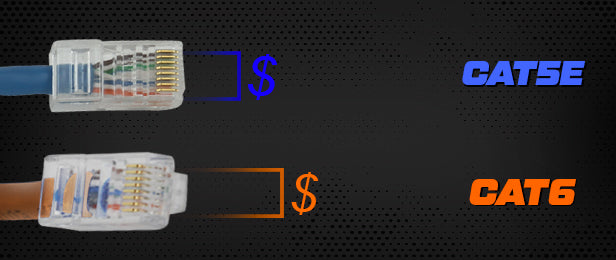
CAT5E vs CAT6: price
While the price of CAT5E and CAT6 Ethernet cables vary depending on manufacturer, CAT6 does tend to be more expensive. You can expect to pay around 10-20% more than you would for a CAT5E. That said, neither cable is particularly expensive.
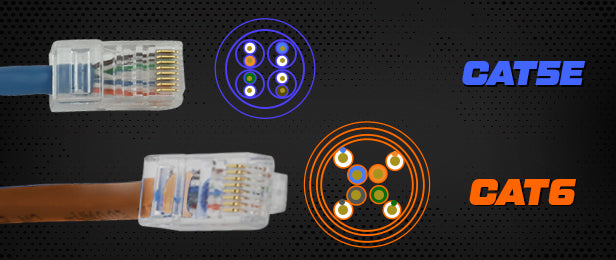
CAT5E vs CAT6: American wire gauge (AWG) sizes
One more thing to consider is the AWG size. Generally speaking, the larger the AWG, the smaller the copper wiring is inside. CAT5E usually has a 24AWG while CAT6 has an AWG of 23. Because CAT6 has thicker copper, it tends to perform better. The copper is thicker but twisted tighter which is why these cables usually aren't much thicker than a CAT5E.
